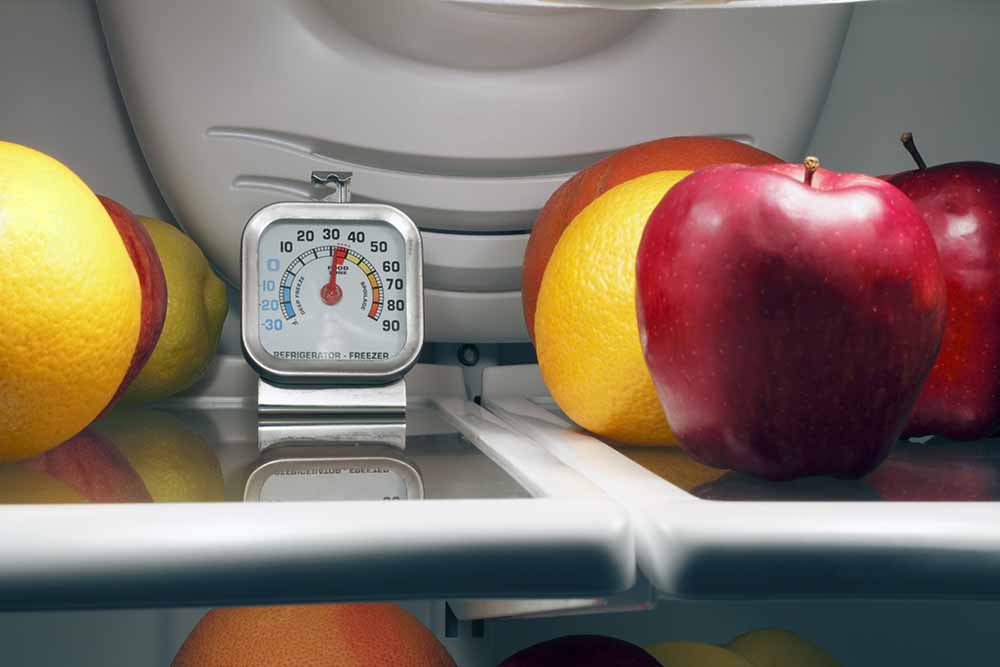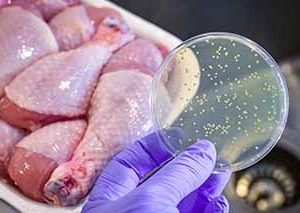
Your refrigerator could be making you sick.
Did you know bacteria begins to multiply on refrigerated food above 40 degrees?
Bacteria in food sickens 48 million Americans per year. 3,000 people die annually from food poisoning.
Most people don’t know the temperature inside their refrigerator or freezer. Even the most modern refrigerators don’t have thermometers inside.
The Health Department will fail a restaurant for not having appliance thermometers inside refrigerators and freezers.
Why should your kitchen be any less safe than your favorite restaurants?
The ideal temperature for refrigerators is between 35 and 38 degrees Fahrenheit. Freezers should be below 32 degrees Fahrenheit.
Appliance thermometers
The best way to monitor the temperature inside your refrigerator is by placing a freestanding thermometer in your fridge and in your freezer.
The thermometer in your refrigerator should be placed away from the back near the top since the back is coldest and warm air rises.
A happy fridge is a filled fridge
Filling your fridge with food helps to maintain the cold temperature and conserve energy when opening/closing the door.
However, do not overpack the refrigerator because cold air can’t circulate freely around the food.
Items like milk, eggs and meat should be placed near the back where the cooling elements are.
Never place eggs or milk in the door where the temperatures are highest.

Remember that refrigeration doesn’t destroy bacteria in food. Bacteria is present on all food, vegetables, and fresh squeezed juice. Cold temperatures only slows down bacterial growth.
Food storage times
You should discard cooked meat such as fried chicken or turkey after 3-4 days in the refrigerator.
Raw uncooked meat lasts 2 days in the fridge. After that it should be cooked or discarded.
Raw meat can be frozen for 9 months (pieces) to 1 year (whole bird).
Click here for FDA recommended home-refrigerator food storage times.
Never eat cooked food that was left on the counter overnight. Some bacteria can survive the cooking process and multiply rapidly at room temperature.
Never rely on smell or taste as indicators of food spoilage.
Store leftovers in the fridge in covered containers or Ziploc bags. Check the expiration date on your food and discard if the date is expired.
When in doubt, throw it out if you’re not sure whether food is past the expiration date.
Refrigerate groceries quickly
Put your groceries in the refrigerator as soon as you get home from the grocery store.
Never leave perishable items to sit at room temperature for more than 2 hours. Bacteria multiplies rapidly at room temperature.
If you took an item out of the cooler at the grocery store it should go in your fridge or freezer.
Organic, fresh squeezed juice that do not contain preservatives must be refrigerated.
Always read the food package label to determine if food should be refrigerated or frozen.
Thaw food safely
Never thaw meats on the counter at room temperature. The FDA suggests 3 ways to thaw food safely:
Cleaning tips
Always wash your hands before preparing food.
Always clean kitchen surfaces after preparing food.
Click here for 10 tips on cleaning your refrigerator.
This has been your Medical Minute
DISCLAIMER
Any medical information published on this blog is for your general information only and is not intended as a substitute for informed medical advice. You should not take any action before consulting with your personal physician or a health care provider. Sandrarose.com and its affiliates cannot be held liable for any damages incurred by following information found on this blog.





